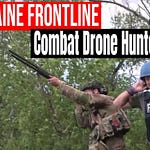The latest NATO Summit has concluded, and it was anything but business as usual. From Donald Trump being dubbed “Daddy” by NATO leadership, to Ukraine’s controversial future within the alliance, to conflicting claims about Iran's nuclear facilities, this summit made headlines worldwide. Here's what really happened behind the doors — and on the microphones.
Trump Steals the Spotlight — “Daddy” of NATO?
At the center of attention was U.S. President Donald Trump, who seemed to dominate the room. The NATO Secretary General, Mark Rutte, even jokingly (or not?) referred to Trump as “Daddy” — a moment that sparked laughter, awkwardness, and endless headlines. When asked about it, Trump quipped that Rutte "likes him" and if not, "I’ll hit him hard."
This bizarre moment came amid serious talks. Rutte later backtracked, clarifying that he meant European countries sometimes act like children asking if “Daddy America” will stay — not that he was literally calling Trump their father figure.
NATO Summit: What Is It and Why It Matters
The NATO Summit is a biennial high-level meeting where officials from 32 member countries — including presidents, prime ministers, and military leaders — come together to decide strategic military cooperation, alliance direction, and collective defense policies.
This year, the summit was packed with announcements that could shape global geopolitics for years to come.
Key Announcements and Controversies
🔸 Ukraine: “Irreversible” NATO Path?
Despite not being formally welcomed — with Hungary’s Viktor Orbán saying “we don’t want to sit at the same table” as Zelensky — NATO leaders declared Ukraine’s accession path to NATO “irreversible.” Zelensky made a rare appearance in a suit, seemingly dressing to impress.
🔸 5% Defense Spending Target
Perhaps Trump’s biggest “win” was securing a pledge from NATO members to double their military spending target from 2% to 5% of GDP by 2035. Trump bragged this was something he’d demanded years ago — and now, it’s policy. 3.5% will go toward core military spending, with 1.5% for other security areas.
Each country must submit a roadmap by next year, with reviews beginning in 2029.
Russia: Threat or Not?
In a surprising contradiction, while NATO officially labeled Russia a long-term threat to Euro-Atlantic security, Trump told NATO leaders that Russia would not attack NATO states as long as he is president.
Is he implying a special understanding with Russia? Trump didn’t clarify, but the messaging split was clear — NATO views Russia as a danger; Trump does not.
Trump’s Icebreaker Deal With Finland – Fact-Checked
Another Trump bombshell was his announcement that the U.S. will buy 15 icebreakers from Finland, calling them “kings of icebreakers.” But here's the issue: Finland only operates eight dedicated icebreakers.
Compare that to Russia, which has between 46 and 57 icebreaking vessels — eight of which are nuclear-powered. So, how will Finland supply 15 to the U.S.? Unclear.
Iran: Complete Destruction or Conflicting Reports?
Trump repeated his claim that Israel — with U.S. support — completely destroyed Iran’s Fordow nuclear facility using massive new 30-ton bombs. He even compared the strike to Hiroshima and Nagasaki, in terms of impact.
But a leaked U.S. intelligence report (published by CNN) disputes this, saying the damage was not total. Trump and U.S. intelligence director Tulsi Gabbard dismissed the report as false, and now a criminal investigation has been launched into the leak.
Trump insisted Israeli operatives confirmed the destruction and said Iran’s nuclear program has been “set back decades.”
Israel-Iran Ceasefire and Trump’s Role
Trump claimed credit for getting Israel to “bring the planes back,” halting strikes on Iran. But reports suggest at least one or two strikes still happened near Tehran.
Still, Trump praised Israel, saying the ceasefire is going well and called Iran’s setback a “great victory.”
European Leaders Speak: Ceasefire or More War?
French President Macron used the summit to urge the U.S. to leverage its power (post-Iran strike) to stop the war in Ukraine. German Chancellor Friedrich Merz said Ukraine’s war “cannot be solved militarily,” while UK Prime Minister said now is the moment to push Putin into a ceasefire.
But on the ground, Russia is gaining more territory, faster than at any point in two years — making those ceasefire calls seem increasingly detached from reality.
Trump and NATO’s Article 5: “Depends on Definition”
Trump awkwardly responded to a reporter asking if he supported NATO’s Article 5 (mutual defense), saying it “depends on your definition.” Later, at the summit, he reaffirmed his support, saying “we’re with them all the way.” But the earlier hesitation didn’t go unnoticed.
Putin’s Call and Iran’s Warning
Trump also claimed Putin personally called him to help negotiate a ceasefire between Israel and Iran. He then warned Iran that restarting nuclear enrichment would bring more U.S. attacks. “They went through hell,” Trump said. “They won’t try the nuke thing again.”
Final Thoughts
From policy shifts to political theater, this NATO summit was one for the books. Whether you see Trump as a stabilizing force or a wild card, his influence was undeniable. The question now is: Will these decisions actually lead to more stability — or just more confrontation?
Let me know what you think in the comments. Was this a turning point for NATO? Was Ukraine truly welcomed? Did Trump really bring peace — or more chaos?
I’m completely independent. No networks. Just truth.
✔️ Subscribe to my Substack for full reports and behind-the-scenes stories:
🔗
✔️ Support my work with a ONE TIME donation — every bit helps me keep reporting from the front:













Share this post